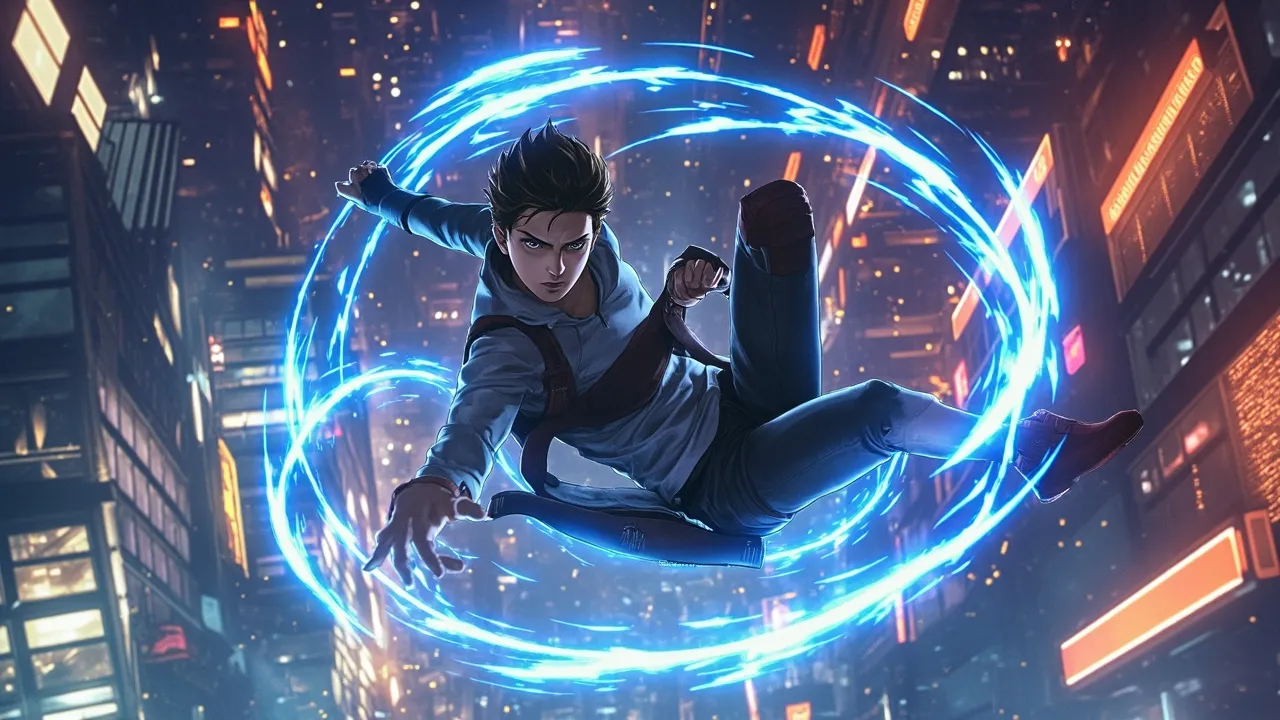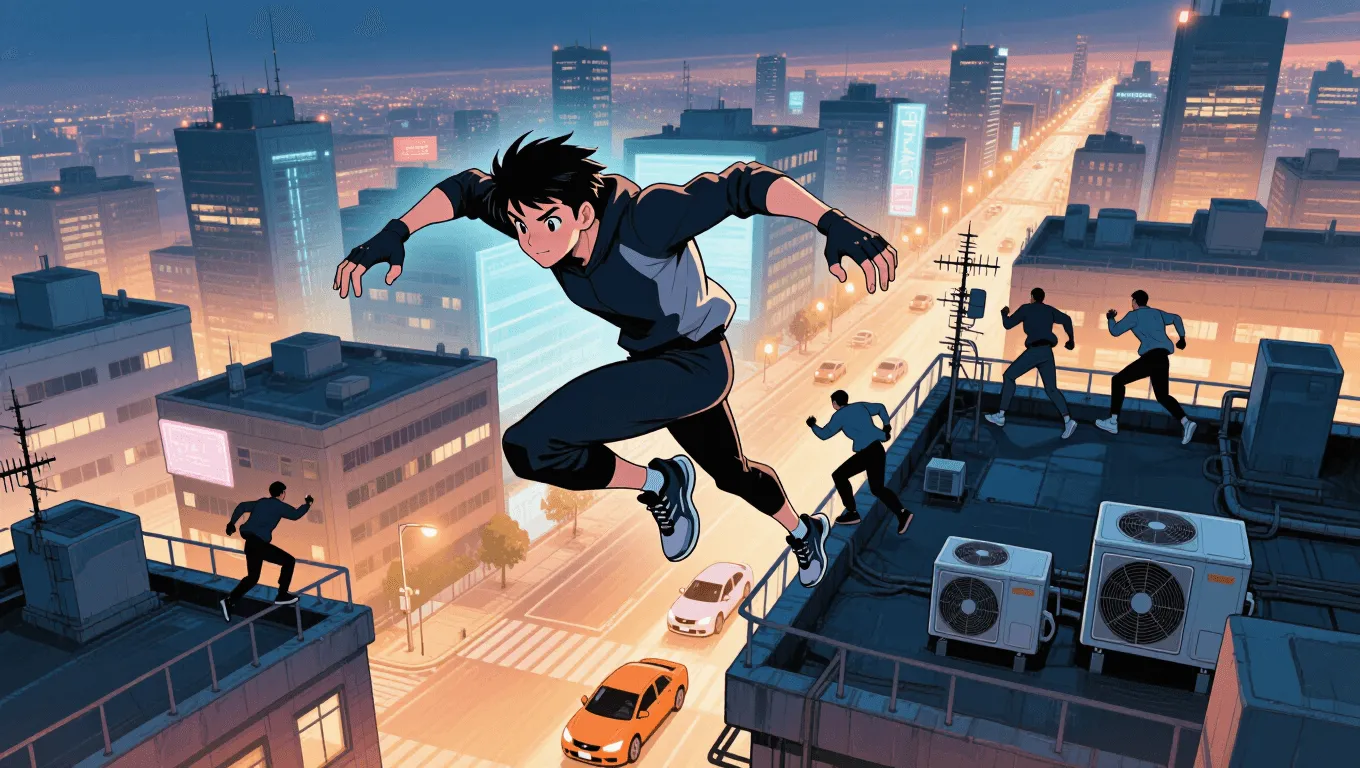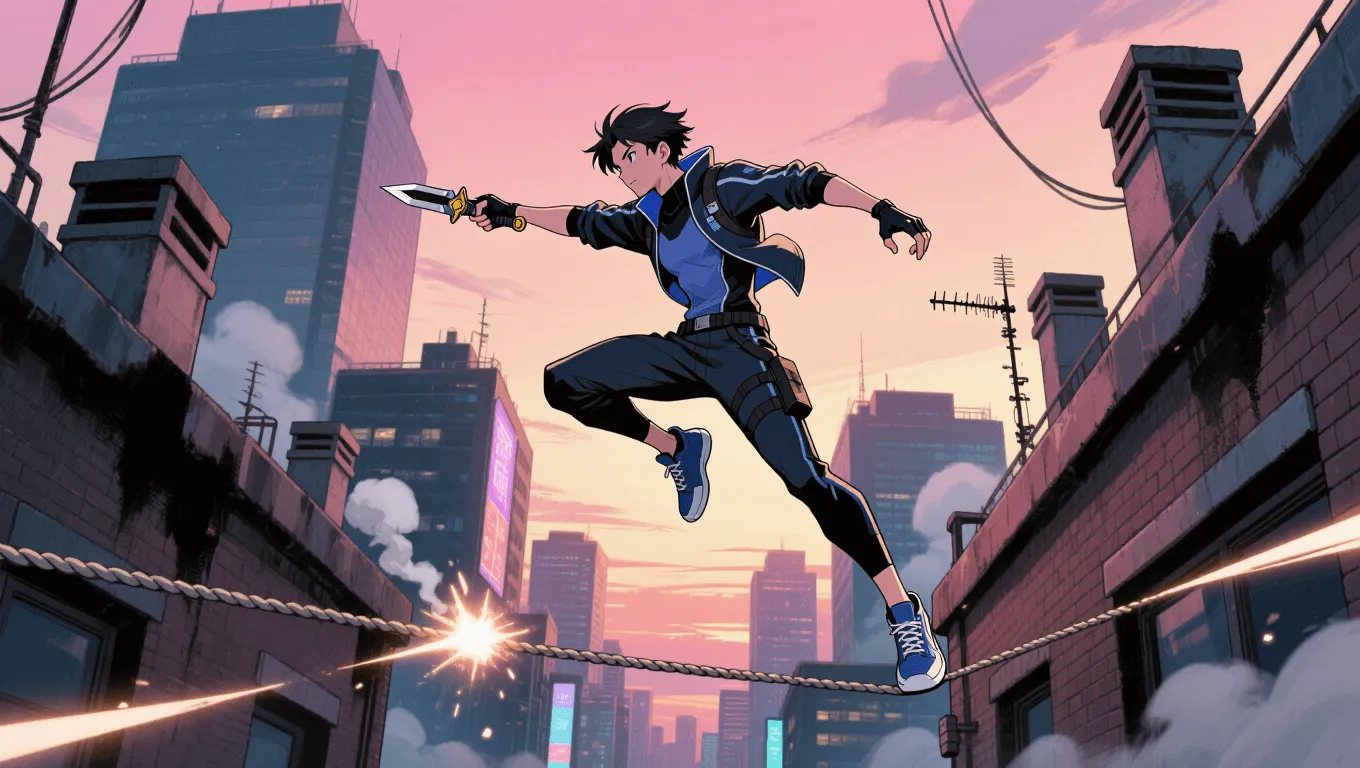Enhanced Agility

Enhanced Agility Video Demo 🎬
Table of Contents
- Enhanced Agility Video Demo 🎬
- What Is Enhanced Agility
- Core Abilities of Enhanced Agility
- Application / Tactical Advantages in Combat
- Level: Level 1 🏙️, Level 2 🌇, Level 3 🌃
- Limitations of Using the Enhanced Agility
- Weakness Against What Other Superpowers
- Synergistic Power Combos
- Application Playbook: Tactical Scenarios
- Training and Progression Notes
- Known Users
Enhanced Agility is the superpower of moving, reacting, and adjusting body position with exceptional speed, coordination, and control. Characters with Enhanced Agility exhibit superhuman balance, lightning-fast reaction time, and fluid motion that turns parkour-level acrobatics into second nature. This guide breaks down how agility enhancement works, where it shines in combat, its progression by level, the limits and counters to watch for, and which other abilities create devastating combos. For more powers like this, explore the complete list on the Superpower Wiki, or discover a random ability with our Random Superpower Generator.
What Is Enhanced Agility
Enhanced Agility is a physical-performance superpower centered on the nervous system and musculoskeletal efficiency. It improves neuromuscular coordination, balance, proprioception (the body’s position sense), and vestibular stability (inner-ear equilibrium), enabling feats that ordinary athletes can’t match. Unlike raw super speed, agility focuses on changing direction, starting and stopping on a dime, and executing complex movements—vaults, flips, wall-runs, and evasive steps—without losing control. It also often includes superior reflexes and hand-eye coordination, giving users a “feel” for momentum and angles that makes them appear effortlessly nimble.
Key associated keywords include superhuman agility, acrobatic mastery, catlike balance, evasive movement, tactile responsiveness, and fast-twitch muscle optimization.
Core Abilities of Enhanced Agility
Reflex Acceleration and Reaction Time
Users process stimuli fast and translate that into movement with minimal lag. This means catching falling objects mid-flight, snatching projectiles from the air, or slipping out of harm’s way before a punch fully extends. Reaction time and predictive movement often feel like a limited form of combat precognition, though it’s rooted in trained pattern recognition and neuromuscular speed, not mind reading.
Superior Balance and Proprioception
Enhanced proprioception and a tuned vestibular system allow tightrope-level balance on thin or moving surfaces. Users maintain stable posture while rotating, inverting, or landing from awkward angles, reducing stumble or injury risk and enabling clean transitions between maneuvers.
Dynamic Flexibility and Joint Control
Agility enhancement includes increased range of motion and dynamic flexibility. It’s not contortionism per se, but the joints tolerate deeper angles and faster changes without strain, making split-second corrections safe and efficient.
Coordination and Motor Learning
Fine motor control and kinesthetic intelligence are heightened. Complex movement patterns—cartwheels into handsprings into aerial twists—can be learned rapidly, retained longer, and executed under pressure. This supports stealth, climbing, vaulting, and fluid weapon transitions.
Directional Speed and Acceleration
While not equal to top-tier speedsters, agility users accelerate quickly in short bursts and, more importantly, change direction with minimal momentum loss. This is critical for dodging, circling opponents, and weaving through dense environments.
Impact Damping and Landing Mechanics
Enhanced kinesthetic awareness translates into safer landings and energy distribution across joints and soft tissue. Users roll, slide, or absorb forces with optimal mechanics, reducing injury and allowing rapid re-engagement.
Application / Tactical Advantages in Combat
Evasion and Counter-Timing
Enhanced Agility shines in close quarters. Users step off the line of attack, slip inside an opponent’s range, and counter before the adversary recovers. Micro-adjustments of distance and angle turn enemy power against them.
Spatial Control and Angle Creation
By cutting corners and exploiting blind spots, agility users engineer off-angle entries for strikes or grapples. They thrive in vertical spaces—catwalks, scaffolding, fire escapes—where wall-running and three-dimensional movement overwhelm linear fighters.
Weapon Flow and Disarm Potential
Seamless hand transitions, wrist control, and footwork help strip weapons, redirect projectile paths, or position bulky opponents into barriers. Agility also pairs well with light, fast weapons—batons, short blades, chains—where speed of repositioning trumps brute force.
Terrain Exploitation and Pursuit/Escape
Urban pursuit becomes a chess game. Parkour-grade vaults, precision jumps, and bar-to-bar traversals let users chase or vanish through routes most combatants cannot follow. In stealth contexts, soft footfall and balance reduce noise signatures.
Crowd and Projectile Management
Against multiple attackers, agility provides split-second triage: faint pressure draws one foe forward while the user rotates around another, using bodies as shields. For projectiles, tight head movement, torso slips, and hip rotations shave centimeters from hit boxes.
Level: Level 1 🏙️, Level 2 🌇, Level 3 🌃
Level 1 🏙️: Street-Grade Nimbleness

-
Capabilities: Above-elite athleticism; rapid direction changes; surefooted on narrow surfaces; quick rolls and recoveries.
-
Feats: Sprint-stop-spin combos without skid; vault cars and railings; consistent parkour strings across rooftops with measured risk.
-
Combat Use: Reliable dodges against average fighters; quick disarms with setup; superior pursuit/escape in complex terrain.
-
Limitations: Sustained high-G turns cause fatigue; high falls still dangerous without perfect mechanics; crowd control relies on timing more than durability.
Level 2 🌇: Urban Apex Acrobat

-
Capabilities: Reflexes rivaling trained meta-humans; near-silent landings; advanced aerial orientation and midair course corrections.
-
Feats: Wall-runs into rebounds; catching thrown weapons mid-flight; leaping gaps that challenge Olympic vaulters; precision toe landings on cables.
-
Combat Use: Consistent evasion of skilled combatants; rapid position cycling (front/side/back); flowing weapon transitions under pressure.
-
Limitations: Bone and tendon durability still a bottleneck during repeated high-impact maneuvers; smoke, grease, and loose debris compromise traction.
Level 3 🌃: Night-Sky Phantom

-
Capabilities: Near-automatic predictive footwork; fluidity that seems unreal; elastic tendons act like springs for explosive redirection.
-
Feats: Multi-wall parkour sequences; split-second redirection of crossfire lanes; threading moving machinery with centimeter precision.
-
Combat Use: Dominates melee against most non-enhanced opponents; uses verticality to tactically reset; can bait, break rhythm, and finish.
-
Limitations: Still mortal—blunt-force trauma, area-of-effect blasts, extreme cold or heat, and sensory overload can break the chain of movement.
Limitations of Using the Enhanced Agility
-
No True Damage Resistance: The power optimizes movement, not toughness. A clean hit from a super-strong strike or heavy projectile can still incapacitate.
-
Traction and Surface Dependence: Oil, ice, talc, wet marble, or loose gravel degrade footing and braking, forcing more conservative lines.
-
Load Sensitivity: Heavy gear, restraints, or carrying civilians reduces acceleration and turning efficiency; backpacks swing and shift the center of mass.
-
Fatigue and Overuse: Even with superior efficiency, prolonged high-intensity sequences strain calves, hips, and spinal stabilizers; cramps and microtears accumulate.
-
Visibility and Sensory Interference: Flashbangs, strobe effects, dense smoke, or high-decibel pulses disrupt the rhythmic timing agility relies on.
-
Tight Quarters and Choke Points: Corridors without vertical options compress angles and reduce the ability to slip lines of attack.
Weakness Against What Other Superpowers
-
Area-of-Effect Control: Shockwaves, tremors, and force domes reduce the value of dodging a single line; Agility excels vs. linear threats, not omnidirectional ones.
-
Gravity Manipulation: Increased gravity or directional gravity wells sabotage jumps, wall-runs, and recovery steps.
-
Friction/Surface Manipulation: Cryokinesis or slick-surface control nullifies traction, undercutting acceleration and braking.
-
Time Dilation or Precognition: Opponents who see or alter timing windows erase the advantage of quick reactions.
-
Air Pressure/Wind Control: Gusts, vacuums, or microbursts push bodies off optimal lines, complicating aerial orientation.
-
Binding/Constriction: Telekinesis, vines, hard-light tethers, or sticky webs trap limbs and negate footwork.
Synergistic Power Combos
-
Enhanced Reflexes + Aerial Awareness: Together, they enable clean midair guard changes, off-axis strikes, and safer high-fall corrections.
-
Minor Kinetic Dampening: Absorbing a fraction of impact energy protects joints during repeated vaults and awkward landings, extending combat endurance.
-
Adhesion/Wall-Crawling: Opens infinite vertical lines—wall-stalls into direction changes, inverted ambushes, and ceiling traversals.
-
Enhanced Vision (Low-Light, Motion Tracking): Clearer motion cues for micro-dodges; improved anticipatory reads on feints and tells.
-
Lightweight Armor or Exosupport: Braces and micro-servos preserve tendon health and convert agility into sustained battlefield tempo.
-
Short-Range Teleport “Steps”: Blink-sized repositioning preserves momentum between platforms and breaks pursuit lock-ons.
Application Playbook: Tactical Scenarios
Urban Rooftop Pursuit
Use rail-precision footwork to minimize energy loss on each plant. Anticipate gaps two steps ahead to pre-load tendons for elastic release. If a jump is long, convert to a wall-run plus rebound instead of a direct leap to reduce fall risk.
Alleyway Ambush
Engage with bounce-steps, circle to the blind-side shoulder, and use vertical elements (dumpsters, fire escapes) to roll over incoming lines. A quick baton flick to a wrist disrupts weapon retention; follow with a push-pull pivot into the wall.
Interior Egress Under Fire
Stay low, “shave” corners, and use doorframes as slingshots. If a corridor is slick, switch to sliding entries with knee-hip alignment to maintain stability, and use friction points (rugs, fabric) for controlled deceleration.
Training and Progression Notes
-
Elastic Strength: Emphasize fast-twitch development and tendon stiffness through plyometrics, depth drops, and bounding—scaled carefully to avoid overuse.
-
Motor Pattern Libraries: Drill scenario-specific strings (vault → spin → wall-tap → drop-roll → sweep) so transitions become automatic.
-
Sensory Calibration: Balance board work, slackline practice, and visual tracking drills sharpen vestibular and ocular-motor systems.
-
Recovery Discipline: Soft-tissue work, sleep, and structured deload weeks prevent chronic calf/Achilles issues common to high-agility movers.
-
Gear Optimization: Minimalist footwear with predictable grip; breathable clothing that won’t snag; compact weapons that won’t torque balance.
Known Users
-
Spider-themed street-level heroes known for acrobatic movement and wall traversal, such as Spider-Man.
-
Urban vigilantes famed for parkour-driven combat rhythm, like Nightwing—unloading blistering escrima combinations off short-angle footwork.
-
Parkour-proficient thieves and cat burglars (e.g., Catwoman) whose balance and landing mechanics allow museum-grade infiltrations.
-
Hyper-aware martial artists such as Daredevil, whose footwork and evasive slips turn crowded brawls into single-lane fights.
-
Tactical spies like Black Widow, integrating agility with grapples, batons, and aerial entries.
-
Advanced-suit warriors like Black Panther, combining agility with kinetic absorption and claw traction.
-
Adaptive mimics such as Taskmaster, whose motor learning reproduces elite acrobatic chains.
These characters exemplify enhanced dexterity, reaction speed, balance mastery, and the strategic use of elevation and angles. For more abilities adjacent to Enhanced Agility, continue exploring the superpower-wiki or roll the dice with our random superpower generator to spark new ideas.
